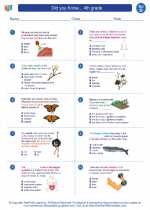Bone
Bones are rigid organs that form the skeleton of vertebrates. They provide structural support, protect vital organs, and allow for movement through their interaction with muscles. Here are some key points to remember about bones:
- Composition: Bones are made up of a combination of mineral salts, such as calcium and phosphorus, and collagen, a protein that provides flexibility and strength.
- Types of Bones: There are five main types of bones in the human body: long bones, short bones, flat bones, irregular bones, and sesamoid bones.
- Functions: Bones have several important functions, including providing support and protection, facilitating movement, producing blood cells, and storing minerals such as calcium and phosphorus.
- Bone Structure: Bones consist of a hard outer layer called compact bone and a spongy inner layer called cancellous bone. Bone marrow, located within the bone, is responsible for producing blood cells.
- Growth and Development: In children and adolescents, bones undergo a process of growth and development known as ossification, where new bone tissue is formed and existing bone is reshaped.
- Common Bone Disorders: Some common bone disorders include osteoporosis, a condition characterized by weakened and brittle bones, and osteoarthritis, a degenerative joint disease that affects the cartilage between bones.
Here are some key questions to help you study the topic of bones:
- What are the main functions of bones in the human body?
- Explain the difference between compact bone and cancellous bone.
- Describe the process of ossification and its significance in bone development.
- What are the main types of bone disorders, and how do they affect the skeletal system?
- How do bones contribute to the production of blood cells?
Use these questions to guide your study and deepen your understanding of the topic "bone". Good luck!
.◂Science Worksheets and Study Guides Fourth Grade. Did you Know... 4th grade
Study Guide Did you Know... 4th grade
Did you Know... 4th grade  Worksheet/Answer key
Worksheet/Answer key Did you Know... 4th grade
Did you Know... 4th grade  Worksheet/Answer key
Worksheet/Answer key Did you Know... 4th grade
Did you Know... 4th grade  Worksheet/Answer key
Worksheet/Answer key Did you Know... 4th grade
Did you Know... 4th grade 

 Worksheet/Answer key
Worksheet/Answer key
 Worksheet/Answer key
Worksheet/Answer key
 Worksheet/Answer key
Worksheet/Answer key

The resources above cover the following skills:
Core Ideas for Knowing Science
Life Science
Organisms are organized on a cellular basis and have a finite life span.